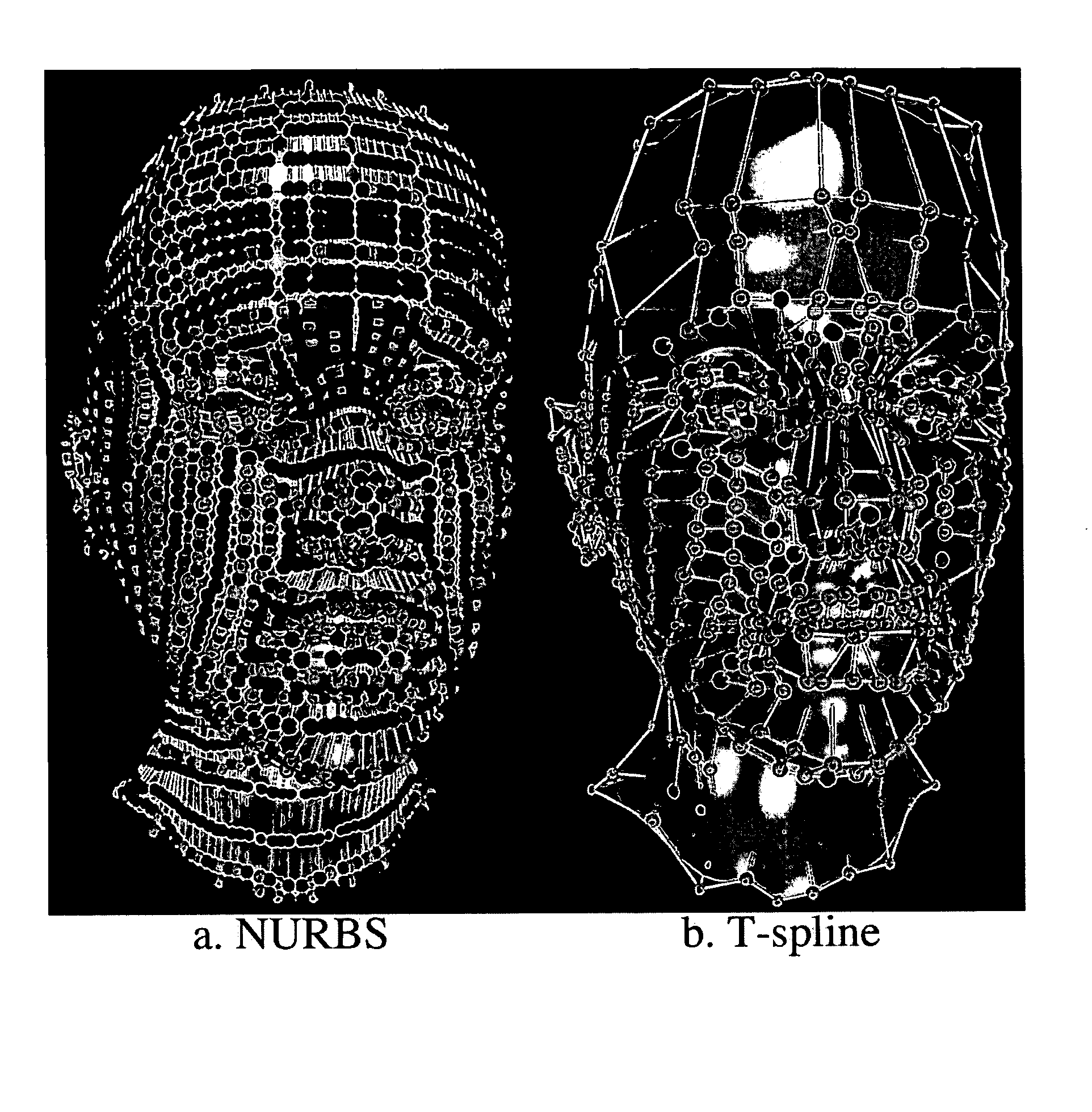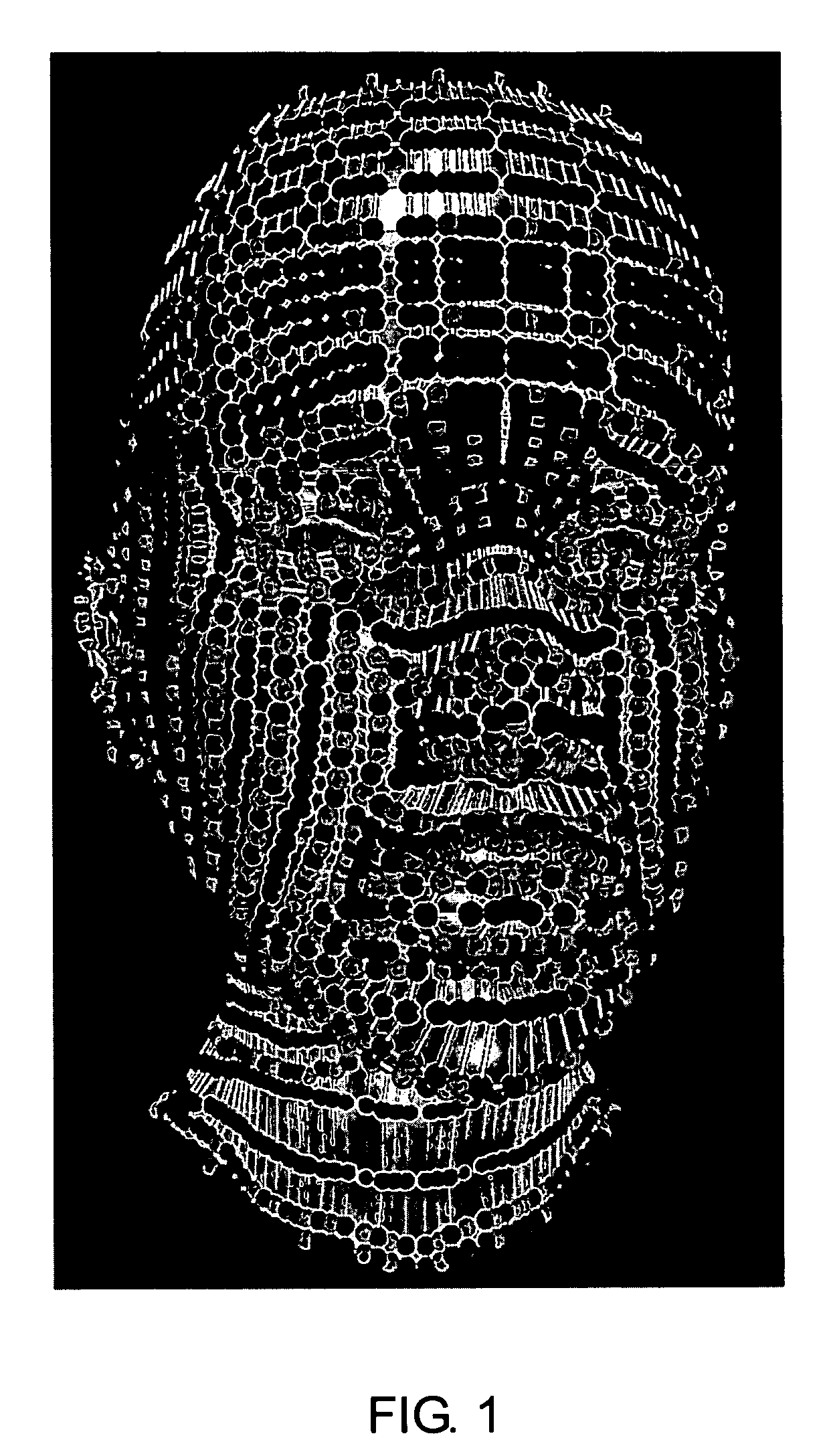System and method for defining T-spline and T-NURCC surfaces using local refinements
a local refinement and surface technology, applied in the field of defining a modeled surface, can solve the problems of increasing the modeling complexity of the surface, unable to allow uniform b-spline surfaces, and non-uniform b-spline surfaces
- Summary
- Abstract
- Description
- Claims
- Application Information
AI Technical Summary
Benefits of technology
Problems solved by technology
Method used
Image
Examples
Embodiment Construction
[0047]Reference will now be made to the exemplary embodiments illustrated in the drawings, and specific language will be used herein to describe the same. It will nevertheless be understood that no limitation of the scope of the invention is thereby intended. Alterations and further modifications of the inventive features illustrated herein, and additional applications of the principles of the inventions as illustrated herein, which would occur to one skilled in the relevant art and having possession of this disclosure, are to be considered within the scope of the invention.
[0048]The present system and method of the invention provide a generalization and improvement of non-uniform B-spline surfaces (NURBS) called T-splines. A major problem with NURBS surfaces is that, because NURBS control points must lie topologically in a rectangular grid, it is often the case that a large percentage of the NURBS control points serve no purpose other than to satisfy the rectangular grid topology. ...
PUM
 Login to View More
Login to View More Abstract
Description
Claims
Application Information
 Login to View More
Login to View More - R&D
- Intellectual Property
- Life Sciences
- Materials
- Tech Scout
- Unparalleled Data Quality
- Higher Quality Content
- 60% Fewer Hallucinations
Browse by: Latest US Patents, China's latest patents, Technical Efficacy Thesaurus, Application Domain, Technology Topic, Popular Technical Reports.
© 2025 PatSnap. All rights reserved.Legal|Privacy policy|Modern Slavery Act Transparency Statement|Sitemap|About US| Contact US: help@patsnap.com



